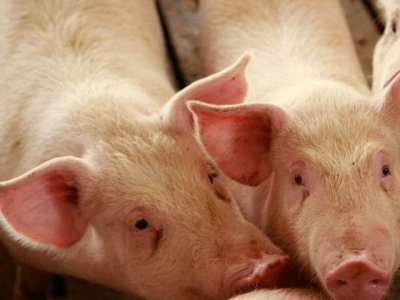Fiber in rice co-products characterized for swine diets

Rice co-products in pig diets add fat and fiber, but too much fiber can decrease energy absorption and digestibility.
A recent study from the University of Illinois characterized the chemical composition of fiber in rice and rice co-products, which could lead to dietary interventions for improved digestibility for swine.
"Because of rice fiber's low fermentability, there's a high upside potential for increased digestibility if we can find specific enzymes that can help degrade those fibers. For pigs, the most important thing is to be able to get more energy out of each ingredient," said Hans Stein, professor in the department of animal sciences and the Division of Nutritional Sciences at the University of Illinois and co-author of the study published in Animal Feed Science & Technology.
Gloria Casas, a former doctoral researcher working with Stein, analyzed the carbohydrate composition of several ingredients — brown rice, broken rice, full-fat rice bran, defatted rice bran and rice mill feed — in a laboratory in Denmark. She also evaluated the digestibility of each ingredient by simulating the environments of the pig's stomach, small intestine and large intestine, including fermentability by gut microbes, the University of Illinois announcement said.
The ingredients varied widely in starch, cellulose, lignin and fiber content, among other specific carbohydrate fractions, but for all ingredients, the primary carbohydrates were arabinoxylans.
"Arabinoxylans are relatively complex fibers that consist primarily of two sugars, arabinose and xylose, though there are many others in there, too," Stein said. "That is true for all the rice co-products, but the ratio between arabinose and xylose differs among the ingredients. That ratio, to some degree, influences the functionality of the fibers."
Simulated (in vitro) digestibility was higher in brown rice and broken rice than for all other co-products, which Stein and Casas expected, given that full-fat rice bran, defatted rice bran and rice mill feed were much higher in insoluble fibers. The results confirm earlier digestibility studies the researchers completed with the same ingredients in pigs.
Stein noted that the results don't just apply to pigs.
"Humans consume rice and rice bran all over the world. Knowing the specific fiber composition of these products will allow us to figure out which gut microbes are affected," he said. "In humans, one of the major problems in terms of nutrition in our part of the world is that we don't get enough fiber. If we consume these fibers, how will they affect our gut microbes?"
Source: University of Illinois, which is solely responsible for the information provided and is wholly owned by the source. Informa Business Media and all its subsidiaries are not responsible for any of the content contained in this information asset.
Related news
 Salmonella control: Do organic acids solve the problem?
Salmonella control: Do organic acids solve the problem? Using effective organic acid products under the right conditions can reduce the presence of Salmonella and improve the productivity of our herds.
 Methionine beyond protein synthesis in growing pigs
Methionine beyond protein synthesis in growing pigs Underestimating the importance of methionine in swine nutrition can have a huge economic impact; DL-HMTBA has extra benefits for pigs in all growth phases.
 How to minimize sow stress, aggression in group housing
How to minimize sow stress, aggression in group housing Producers are increasing docility and maintaining efficiency with group sow housing.